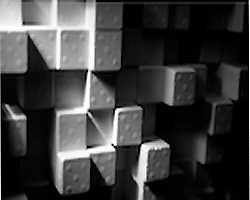I’m writing this on a train up to NY. I’ve got K’Naan’s album “Troubador” playing through my headphones right now, and really vibing on the music.
But as I often do while listening, even casually, I’m admiring the arrangement of sounds, textures, movement, and tones. Hats off to Manny Marroquin, as these mixes are really incredible.
It’s got me meditating on how to “open up” a mix — to allow things to breathe and move while still being full and textured.
The reality of getting a mix to sound “open” is that it’s not one single thing working. Most people will attribute openness to the instrumental arrangement and the way the sounds are captured and EQ’d. And this is true.
But it’s also the space and dynamics. And the front to back perspective of the soundscape. It’s sort of the sum of everything.
Instrumentation
Most obviously and most accessibly, the actual instrumentation of a song will define the openness of it.
Some things are meant to be more sparse and other things are meant to be fuller. Often times, it’s the change from sparse to full or full to sparse that gives a song momentum.
Solo banjo will invariably be “open sounding” whereas a heavily layered synth orchestra a la Stargate (like the chorus of “Black and Yellow” by Wiz Khalifa) is going to be “dense and full.” Neither is necessarily good or bad.
However, there are instances where you find fully orchestrated records that still have a very open sound. It’s rarer to find the opposite: a sparser record that is still dense and full—but engineers such as Young Guru and Mike Dean have managed to make that work.
Air
So aside from arrangement, what else is there? Well, there is also this concept of “air.” A lot of times, air is prescribed to the super treble frequencies, which I think is appropriate at times.
But for me, air is very literal. It’s actual air. It’s very challenging to get a song that was recorded purely close capture and in dead spaces, and make it sound “open.” I’m usually just doing my best not to make it sound claustrophobic.
If the space of a record is all happening within a one foot zone, then the way we perceive sound dictates that we will hear it that way. Whereas a record recorded with natural space, and different proximities, will be perceived as open because there is a wider psychoacoustic plane. We can brute force this illusion with reverb algorithms, but it’s not truly the same.
Compromise & Negotiation
Now we get to the mix concepts. “Open” and “full” are a negotiation. With too much content flying about we get a dense, muddy mess. With too little intersection of sound we get disjoint and thinness. Mixing in this regard is about compromise and negotiation. The “yes, I can take a little 2 kHz out of the cymbals because the guitars are already possessing that space.” The cymbals would most likely sound better with that 2 kHz content—that’s the body zone where the bell rings out.
But in context of a screaming guitar, that part of the cymbal is really not coming through anyway—and might not be needed. Similarly, a low pass on those guitars might be good for the drum overheads — so the treble from the cymbals really rings through clearly.



















